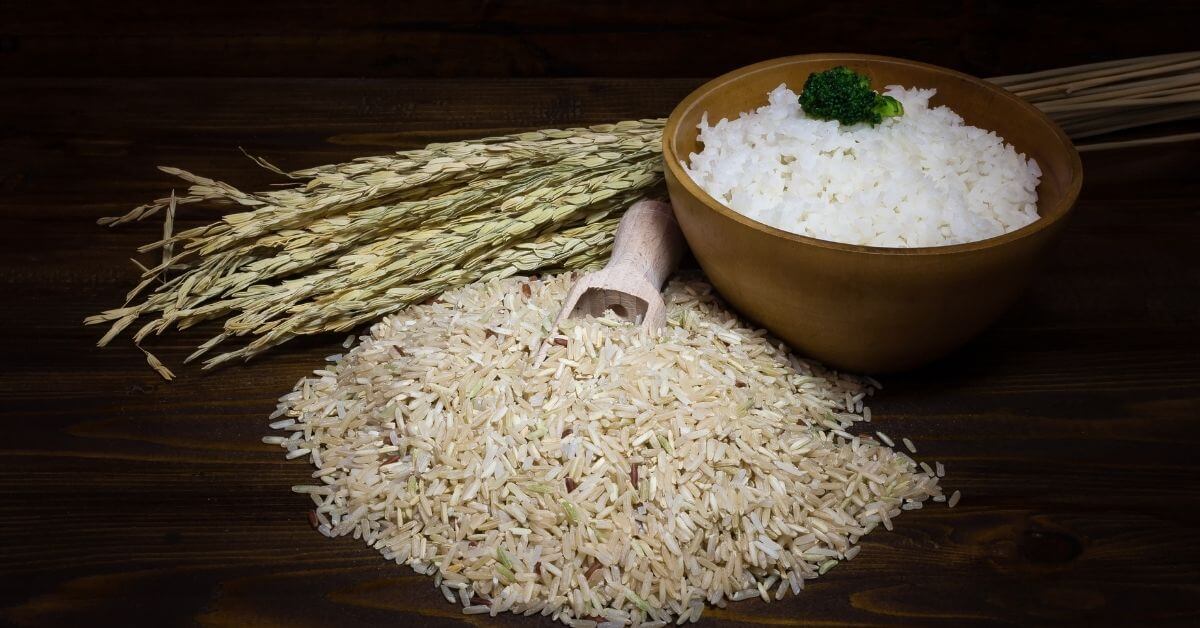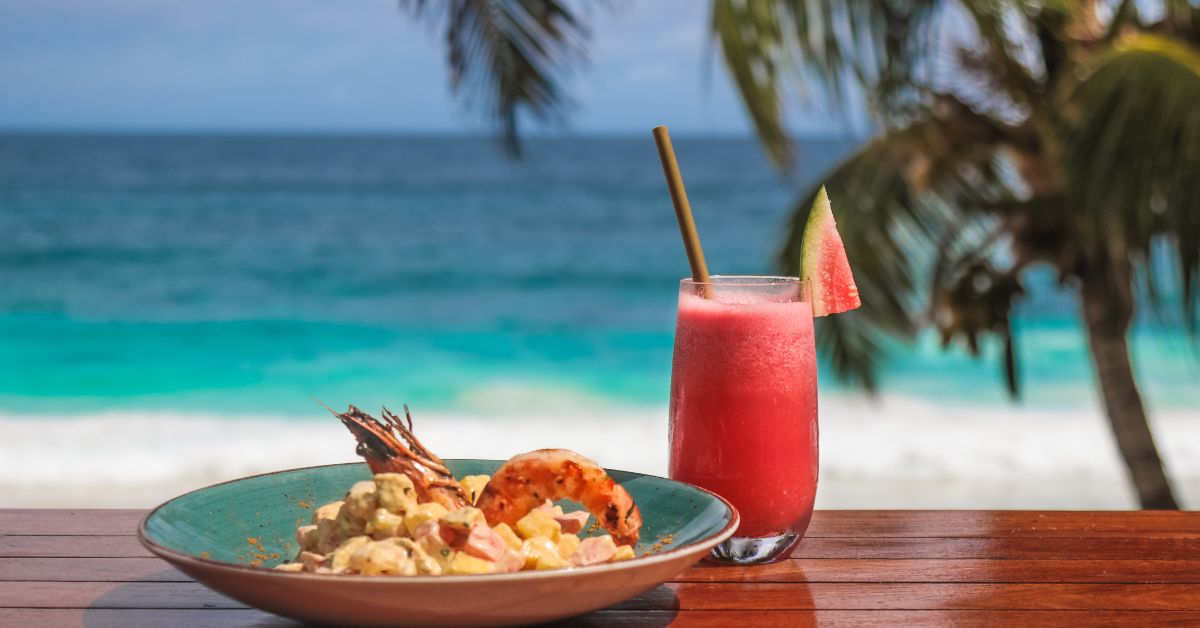Cooking rice is a common question many people have when they start cooking Asian cuisine. Whether it’s short-grain rice in Japan, jasmine rice in China, or other rice varieties throughout Vietnam, Thailand, and Malaysia. While it may seem simple, cooking rice properly requires attention to detail.
Table of Contents
In this article, we will discuss the basics and complexities of cooking rice, covering various aspects to create a comprehensive rice cooking guide.
various types of rice available worldwide
Rice is a staple food for half the world’s population, and there are many different varieties of rice available around the globe. The three main categories of rice are long grain, medium grain, and short grain. Each type of rice has its own unique characteristics and uses in various cuisines.
Long Grain Rice
Long grain rice is typically slender and elongated, with a length that is at least three times its width.
Popular varieties include Basmati rice, Jasmine rice, and Carolina Gold rice.
Long grain rice is usually light and fluffy when cooked and is commonly used in Indian, Middle Eastern, and Southeast Asian cuisine.
Before cooking long grain rice, it is important to rinse it thoroughly to remove any excess starch and impurities.
Medium Grain Rice
Medium grain rice is slightly shorter and wider than long grain rice, and has a higher starch content.
Popular varieties include Arborio rice (used in making risotto), Egyptian rice, and Carnaroli rice (used in making paella).
Medium grain rice is stickier and more tender when cooked, making it ideal for dishes that require a creamy texture.
Short Grain Rice
Short grain rice is typically squat and rounded, with a length that is less than twice its width.
Popular varieties include Sushi rice and Sticky rice (also known as Mochi rice).
Short grain rice is often used in Japanese, Korean, and Chinese cuisine, and has a sticky texture that makes it ideal for molding and shaping.
Before cooking short grain rice, it is important to rinse it thoroughly to remove any excess starch and impurities.
Other Varieties
In addition to long grain, medium grain, and short grain rice, there are many other varieties of rice available worldwide.
Colored rices like red rice, black rice, and beet-dyed rice are becoming more popular due to their unique flavors and striking appearance.
Brown rice is another popular variety that is rich in nutrients, including fiber, magnesium, and B vitamins. It takes longer to cook than white rice, but has a nuttier flavor and more texture.
Rice cooking methods and equipment
There are various methods for cooking rice, including using a rice cooker, stovetop, or even the microwave. While rice cookers offer convenience, cooking rice on the stove or in the microwave is also possible. For stovetop cooking, it is recommended to use a heavy-based pot to ensure even heat distribution and avoid burning. Regardless of the method, understanding the cooking process is essential for achieving great results.
pared to cooking rice on a stove, using a rice cooker offers many advantages that may not be immediately obvious. A rice cooker is convenient and easy to use, producing consistent results every time you cook. It allows for multitasking in the kitchen, as you can set the rice to cook and then focus on other tasks. Additionally, most modern rice cookers come with built-in timers and automatic shut-off features, which makes cooking rice safe and worry-free. Rice cookers also keep the cooked rice warm for several hours, so you can enjoy fresh and hot rice whenever you are ready to eat.
Cooking rice on a stove, on the other hand, provides versatility in cooking methods and requires constant attention and monitoring, which can lead to inconsistent results. However, this method can be useful if you do not have access to a rice cooker or want to prepare rice in larger quantities than the rice cooker can accommodate.
Overall, whether to cook rice on a stove or use a rice cooker comes down to personal preference and convenience. Rice cookers are a great option for busy home cooks who want consistently perfect rice without a lot of effort, while cooking on the stove provides more versatility and control over the cooking process.
Preparing the Rice
Before cooking, it is essential to rinse the rice to remove any dirt or excess rice flour. While modern rice processing has improved cleanliness, rinsing helps eliminate stickiness and improve the texture of the cooked rice. Simply swish the rice in the pot with water and pour off the cloudy liquid. Repeat this process a few times to remove the excess flour. Some stickiness is desired, as it allows the grains to stick together slightly.
Determining Water Ratio
Different cultivars of rice can absorb differing amounts of water. Factors affecting water absorption include surface area, amylose and protein contents, and gelatinization temperature. Long-grain cultivars tend to require more water than medium-grain and short- grain types (Batcher et al 1957; Khan and Ali 1985).
https://naldc.nal.usda.gov/download/15930/PDF
Here are some general guidelines for water to rice ratios for different types of rice:
- Wild rice: 3 cups of water for 1 cup of rice
- Brown rice: 2 cups of water for 1 cup of rice
- Long grain white rice: 1 ¾ cups of water for 1 cup of rice
- Medium grain white rice: 1 ½ cups of water for 1 cup of rice
- Short grain white rice: 1 ¼ cups of water for 1 cup of rice
- Basmati rice: 1 ½ cups of water for 1 cup of rice
- Jasmine rice: 1 ¾ cups of water for 1 cup of rice
Keep in mind that these ratios are just a starting point, and may need to be adjusted based on factors such as altitude, the age of the rice, and personal preference. It’s also important to rinse the rice thoroughly before cooking to remove any excess starch.
When cooking rice on the stove, precise measurements are not critical. Unlike rice cookers with specific water ratios, stovetop cooking allows for more flexibility. A simple rule of thumb is to add water until it reaches the first knuckle of your finger when touching the top of the rice. This method may vary slightly depending on factors such as pot size and the amount of rice being cooked. The cooking process allows the rice to absorb the necessary amount of water.
Cooking the Rice
Bring the pot to a simmer over medium heat, and then reduce the heat to the lowest setting possible while maintaining a gentle simmer. Let the rice cook for about 15 to 20 minutes, allowing it to absorb the water gradually. The low heat ensures that the rice doesn’t burn at the bottom. Once the water is completely absorbed, the rice is ready.
Resting and Fluffing the Rice
After the cooking time, let the rice rest for a few minutes without heat. This allows the excess steam to escape, resulting in fluffy rice. Gently fluff the rice using a rice paddle or fork to separate the grains and create a light and airy texture.
What to Add to Cooked Rice for Flavor?
Cooking rice doesn’t have to be a bland and boring affair. By incorporating various ingredients and seasonings, you can transform a simple bowl of rice into a flavorful and satisfying dish. With a little creativity and experimentation, you can transform this humble grain into a culinary masterpiece.
Butter:
Adding a pat of butter to your cooked rice can impart a rich and creamy flavor. It enhances the overall taste and adds a velvety texture to the grains. Simply stir in the butter while the rice is still warm, and watch it melt and coat each grain with its lusciousness.
Salt:
Salt is a basic yet essential seasoning that can elevate the flavor of rice. It helps to bring out the natural taste of the grains and enhances the overall dish. Add a pinch of salt to the cooking water or sprinkle a little on top of the cooked rice for a burst of savory goodness.
Garlic:
Infusing your rice with the aromatic flavor of garlic can take it to another level. Crush or mince some garlic cloves and sauté them in a bit of oil before adding the rice and water. The garlic will infuse the grains with its distinct flavor, resulting in a fragrant and delicious dish.
Tomato, Onion, and Carrot:
Incorporating vegetables like tomatoes, onions, and carrots can add depth and texture to your rice. Sauté them in a bit of oil or butter before adding the rice and water. The vegetables will infuse their flavors into the grains, creating a vibrant and flavorful rice medley.
Herbs and Spices:
Experimenting with herbs and spices can bring a whole new dimension to your rice dishes. Consider adding ingredients like cumin, turmeric, paprika, cinnamon, or dried herbs like thyme, oregano, or basil. These aromatic additions can lend a unique and tantalizing flavor profile to your rice.
Meat and Protein:
To create a more substantial and satisfying rice dish, consider incorporating cooked meats or protein sources. Whether it’s chicken, beef, lamb, or tofu, adding protein can turn your rice into a complete meal. Sauté the protein with your preferred seasonings and mix it into the cooked rice for a hearty and flavorful combination.
So, next time you cook rice, unleash your culinary prowess and explore the endless possibilities of creating delicious and memorable meals.
Conclusion
Cooking rice is a fundamental skill in Asian cuisine, and mastering it can elevate your dishes to new levels. Whether you prefer using a rice cooker or cooking on the stove, understanding the basics and following the cooking process will lead to delicious, perfectly cooked rice. So, remember these tips, grab your measuring cups, select your favorite rice variety, and embark on a culinary journey to master the art of cooking rice. Enjoy the satisfaction of serving a plate of fluffy, fragrant rice.
FAQ
Why is my rice mushy or overcooked?
Overcooking rice can result in a mushy texture. Ensure you are using the correct water-to-rice ratio and avoid cooking rice for too long. Try reducing the cooking time or using slightly less water.
How can I prevent my rice from being undercooked or too firm?
If your rice is undercooked or too firm, it may not have absorbed enough water. Make sure you are using the appropriate water-to-rice ratio and cook for a longer duration if needed.
What should I do if my rice sticks to the bottom of the pot?
Rice sticking to the pot can occur if the heat is too high or if the pot is not non-stick. To prevent this, use a non-stick pot or try adding a bit of oil or butter to the water before cooking.
Why does my rice have a burnt or scorched taste?
A burnt taste may occur if the heat is too high or if the rice is cooked for too long. Make sure to cook the rice over medium heat and keep a close eye on it to prevent burning.
Can I add flavorings or spices to the rice while cooking?
To achieve fluffy rice, make sure to rinse the rice before cooking to remove excess starch. After cooking, let the rice sit for a few minutes with the lid on, then fluff it gently with a fork to separate the grains.
Can I add flavorings or spices to the rice while cooking?
Yes, you can add flavorings like herbs, spices, or broth to the cooking water to enhance the taste of the rice. Just make sure to adjust the water-to-rice ratio accordingly.
Can I freeze cooked rice?
Yes, you can freeze cooked rice. Portion it into freezer-safe bags or containers and label them with the date. Thaw and reheat it when needed.
What can I do with leftover cooked rice?
Leftover cooked rice can be used to make fried rice, rice pudding, or added to soups and casseroles. It’s a versatile ingredient in many recipes.
Share this post: on Twitter on Facebook









